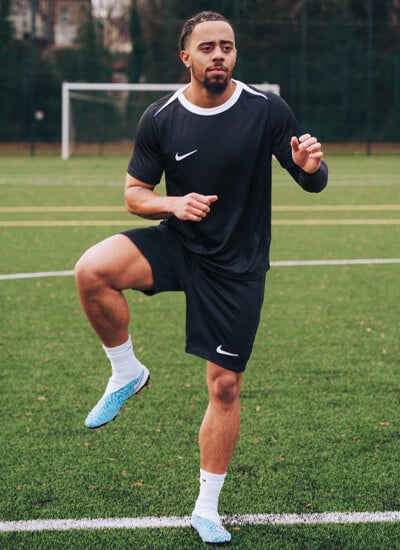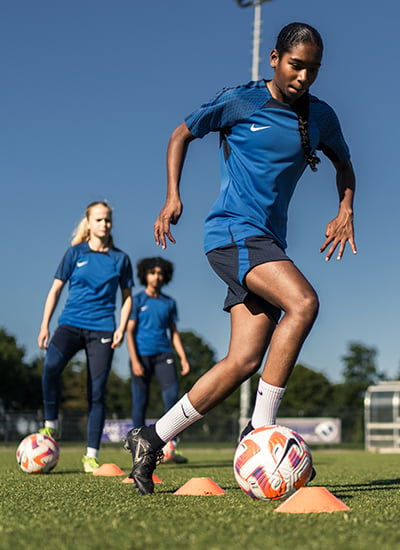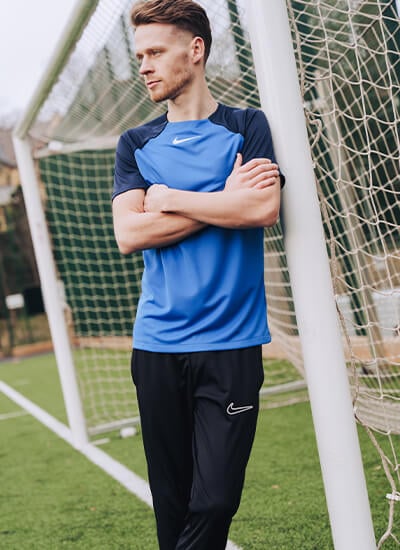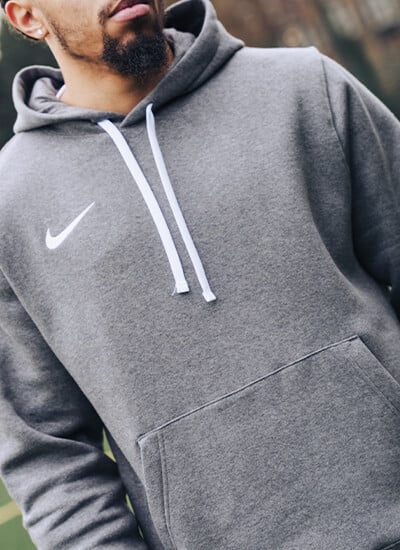With injuries always a possibility in cricket, having a first-aid kit ready is essential. If you’re struggling to pick the right items, this guide is for you!
Items You Need In Your Cricket First Aid Kit
With cricket season just around the corner in the UK, plenty of teams are going to be gearing up and getting ready for the competitions being held around the country. And with over 340,000 people across the UK playing cricket in 2023, whether for fun or in a competition, the sport has never been more popular.
One of the most important things that teams will need to cover though is the health and safety of their players, especially when it comes to injuries on the pitch. Pretty much every sport comes with the risk of injury, and cricket is no exception.
Even with all proper safety guidelines being followed, accidents can still happen.
With potential risks being a part of every sport, a cricket team must have the right equipment to treat almost any problem on the pitch.
So, with that in mind, we have compiled an inventory of the essential items that any cricket first aid kit should have.
Cricket First Aid Kit Items
Whether you’re a Clubmark-certified member of the England Cricket Board (or ECB, more on that later), or simply a first-aid-conscious player/enthusiast, the following items are considered essential by most recreational and professional cricket teams and clubs. Make sure that your club first aid kit is well-stocked with these items.
For a quick summary, a good first-aid kit will contain the following:
- First Aid Guidance Leaflet
- Bandages
- Tape
- Wound Dressing
- First-Aid Scissors
- Wash-Proof Plasters
- Freeze Sprays/Instant Ice Packs
- First Aid Safety Pins
- Gauze Sutures/Swabs
- Resusciade Face Shield
- Foil Blanket
- Glucose Chews
- Disposable Clinical Gloves (A Pair)
- Clinical Waste Bags
- Non-Alcoholic Wipes
- Petroleum Jelly
First Aid Guidance Leaflet
While a leaflet may not be the first thing that you think of when it comes to a first aid kit, it is an essential piece that every kit should have.
While most cricket teams should have a certified first aid player or professional, sometimes they just aren’t available.
So, having a guide to first aid, whether it’s identifying specific injuries or step-by-step instructions for treating problems, is an essential item for players and others on the pitch to provide treatment with.
Bandages
A first aid item that every kit should have plenty of, for sports or otherwise. Bandages are a versatile piece of kit that can be used to treat many issues, depending on the type of bandage that you are using.
- Roll Bandages are some of the most common in first aid kits, and for covering dressings and preventing them from falling off an injury. They’re usually made from absorbent material to stop them from sticking to the skin after a long time.
- These bandages can also come in a massive range of sizes and widths, for different types of injuries.
- Gauze Bandages are excellent at absorbing extra moisture from around a wound, to prevent bacterial build-up in blood or other bodily fluid secretions. They’re also a very soft dressing to use.
- Crepe Bandages are a type of compression bandage and are perfect for holding less elastic dressings and bandages in place and under light compression, such as gauze bandages.
- Triangular Bandages are exactly what they sound like, bandages that are meant to be cut into triangle shapes at a right angle. These particular bandages are perfect for creating slings for pulled/twisted/lightly broken arms, and head injury padding.
Because no single type of bandage is perfect for every injury, we recommend including a variety of different bandages in your first aid kit.
Tape
Quicker and easier to apply, first aid kit tape is ideal for when an injury needs to be dressed as quickly. First-aid tape is also great for securing muscles that may have been pulled, torn or otherwise injured, until they can be properly treated.
Like with bandages, you have a wide range of options when it comes to different tapes to use for a specific injury. For just a few examples:
- Silicone Tape is resistant to water, and is hypoallergenic, making it perfect for stopping moisture from building up in areas where humidity can cause injuries to become infected. Its adhesive surface is also perfect for securing dressings and bandages.
- Zinc Oxide Tape is considered a strong type of first aid tape, thanks to its stronger adhesive and more rigid shape. While it does not stretch like other tapes do, this does make it great for when you don’t want a muscle or body part to move while it recovers.
- Sports Tape is both a strong adhesive and has slight compression properties, making it a popular tape to apply to parts of the body that are under. This type of tape is most common for high-contact sports, so this one may be less necessary in cricket than in other sports such as rugby or football.
Wound Dressing
One of the most important items that you can have in a first aid kit, wound dressings are a must-have item in all kits. These layered first aid items prevent an injury area from being rubbed into or further damaged by your outer cricket layers, like your clothing or pads, allowing it to heal much more effectively.
Dressings also prevent areas from coming into contact with outside bacteria that can cause infections, keeping the wound clean, and making recovery that much quicker and painless.
First-Aid Scissors
Having all the right dressings in the world won’t be much help if you can't cut or shape them. It’s a task that you can’t just do with any normal pair of fabric scissors, thanks to the specific materials that dressings like bandages and tape are made from.
First aid scissors are tailor-made to be used for this reason, which is why every first aid kit should include a pair.
Wash-Proof Plasters
Plasters have always been a favourite dressing for professional and home wound treatment, and the same is true for cricket first aid kits too. Like their larger dressing counterparts, they keep the injured part of a player’s body free of outside bacteria, keeping infection down.
Sports plasters come in a ton of shapes, sizes, and designs for different injuries, so make sure to have an assortment to cover a wide range of injuries.
And make sure that they are wash-proof too. No amount of padding and protection can help a plaster if it won’t stay stuck on when exposed to water!
Freeze Sprays/Instant Ice Packs
Whether it’s a pulled or strained muscle, cold temperatures have been proven to help reduce the pain and swelling of a damaged muscle or area. This is why ice packs have long been a popular item in cricket and other sports first aid kits.
Applying an ice pack quickly to any spot where a player has been knocked or injured is vital for avoiding further bruising and swelling around the area, and even reducing the damage done to your body. Using endothermic ice packs also gives your item a longer usable life away from a freezer, or places where keeping ice packs cool might be difficult.
Alternatively, freeze sprays do pretty much the same thing as ice packs, giving a sore or swollen injury a quick way of relieving the pain and ache.
First Aid Safety Pins
As we’ve already mentioned, some types of dressings and bandages need to be secured and fastened while they are applied.
First-aid safety pins are particularly good for triangular bandages and are better for holding a sling together than other items like first-aid tape.
Gauze Sutures/Swabs
Gauze swabs are great for helping treat open wounds and injuries to players, especially when used with first-aid wipes.
Once the wound has been treated, you can then use gauze sutures to help close a wounded area. These work like other dressings, while also aiding in the injury recovering quickly by gently holding the injury in place.
Resusciade Face Shield
If a player or spectator goes into cardiac arrest during a match, then CPR will be necessary to keep the patient alive for further treatment.
Resusciade face shields allow a person to provide this life-saving process, whilst also lowering the chances for both parties to infect one another. Something that can be life-saving, especially after a massively taxing condition like cardiac arrest.
Foil Blanket
Foil blankets are just as much a must-have first aid tool to have in cricket as they are in regular emergency response kits.
There is a danger that the injured party is likely to go into shock and even unconsciousness after an accident or injury, especially in poor weather. Foil blankets help manage these side effects by keeping an injured person warm, and protecting them from exposure in colder/wetter environments.
Glucose Chews
An often overlooked aspect of treating patients in shock is their glucose/sugar levels, which can cause a person to become drowsy or fall unconscious in the aftermath of a serious shock to the system, like an injury.
Glucose chews help the user minimize this risk, whilst also keeping a part of their mind focused on a specific task, keeping them conscious while they can be treated or moved.
Disposable Clinical Gloves (A Pair)
We’ve mentioned a few times how dressings and other times are supposed to protect an injury from becoming infected and slowing recovery. However, even simply using your bare hands can result in a bacterial or fungal infection taking root.
This is why it’s important to include at least one pair of clinical gloves in every first-aid pack. Even if you only need to apply a plaster, you should always wear these types of gloves when treating an open wound.
If you can, make sure to include nitrite clinical gloves in your first aid kit. Their more durable design makes it less likely for them to be punctured or otherwise damaged.
Clinical Waste Bags
In a similar vein to clinical gloves, it’s critical to have a safe place to dispose of first aid equipment and material that has been spoiled or ruined with bodily secretions or fluids. So, make sure that your first aid kit also includes a clinical waste bag, to store said ruined items until you can properly dispose of them!
Non-Alcoholic Wipes
Staying on the antiseptic tools for a little longer, wipes are essential for cleaning an area of potentially harmful bacteria, so a dressing can be then applied to an injury.
Alcohol-free wipes tend to have a less harsh sensation when gently applied, so make sure to choose these types of wipes.
Petroleum Jelly/Vaseline
Cuts and other open wound injuries have a tendency to dry out and start scabbing if not properly moisturized, which generally takes longer to fully heal, and can even lead to scarring in some cases.
Vaseline helps to combat this, by providing a layer of moisturizing to an injury, while also protecting it from outside bacterial infection, alongside it being safe to apply to most people’s skin.
It’s the reason that so many other sports include this item in their first aid kits. So why shouldn’t cricket?
Whether it’s a deep gash, or a small cut, having a tub of petroleum jelly in your cricket first aid kit is a good call.
England Cricket Board (ECB) Requirements
If you’re playing cricket in any official capacity in England or Wales, then you’re probably going to want to check out the England Cricket Board’s guidances on first aid management.
The England Cricket Board, or ECB for short, has easy-to-access guidelines from major emergency response organizations, such as St. John’s Ambulance and the British Red Cross, that are great examples to follow when building your team’s first aid kit.
Not only that, but the ECB also offer certification in Clubmark certification for Cricket first aid kits, so you can either become a go-to source for risk assessments on your cricket team or be qualified to provide first aid support.
Final Notes
So, there you have it. A comprehensive guide to a good first aid kit for cricket.
A lot of these items can be easily found in a good First Aid Kit product, like Kitlocker's own Sports First Aid Kit. And, of course, you're going to need backup supplies in case you run out!
While a cricket first aid kit can feel somewhat lengthy, you’ll find that your finished first aid kit will be ready to handle any injury or accident crisis out on the pitch.
Related guides
Best adidas Football Kits by Colour
Summer 2020 Match Kit Guide: adidas








